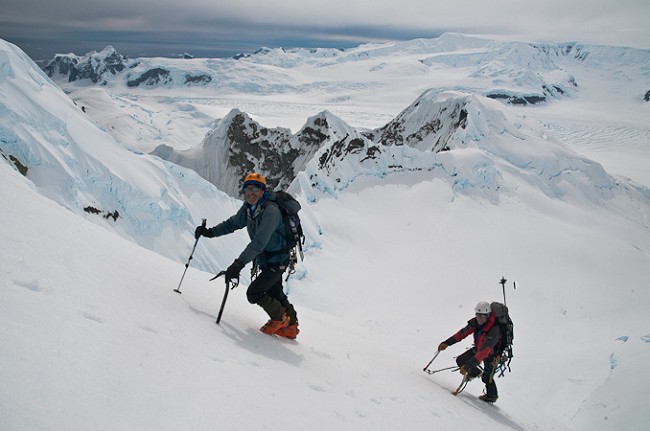


The mountain that dominates the area is the pyramidal Valiente Peak, whose exact height has been questioned on several occasions. Using a day of thick fog to move camp up the glacier to below Valiente's north face, the Alpine Club team skied through cloud to arrive on the summit of an un-named 2032m dome-shaped mountain in perfect weather above a sea of cloud. Four of the team then traversed the mountain to make the first ascent of Valiente Peak (2270m) via the east ridge. After a superb ski descent we then had to cross back over Peak 2032, making this a very long and tiring day.
After another day of thick cloud on the Belgica Glacier the expedition was rewarded with their first totally cloudless day, during which they made the first ascent of Peak 1475m via its north side. After a fairly steep ski ascent, a short ice face and snow ridge led to the summit pyramid which was climbed easily to the top.
The team then decided to return to the yacht in order to attempt the SE side of Mt Rio Branco, unaware that on the same day it was successfully climbed from the north by a French team led by Antoine Cayrol. While returning to the yacht the Alpine Club team summited the east and west summits of Lancaster Hill (642m and 616m).
Westerly winds and heavy precipitation made it too dangerous to attempt Mt Rio Branco or any further peaks to the south and so the expedition headed to Paradise Harbour. With very strong winds forecast in the Drake Passage later in the week the team decided to return to South America while winds were still favourable, and to spend their final few days on the coast of the Cordillera Darwin.
The Alpine Club Antarctic Expedition was supported by the Alpine Club, Mount Everest Foundation, Julie Tullis award and Helsport Tents, whose support was invaluable.







Comments